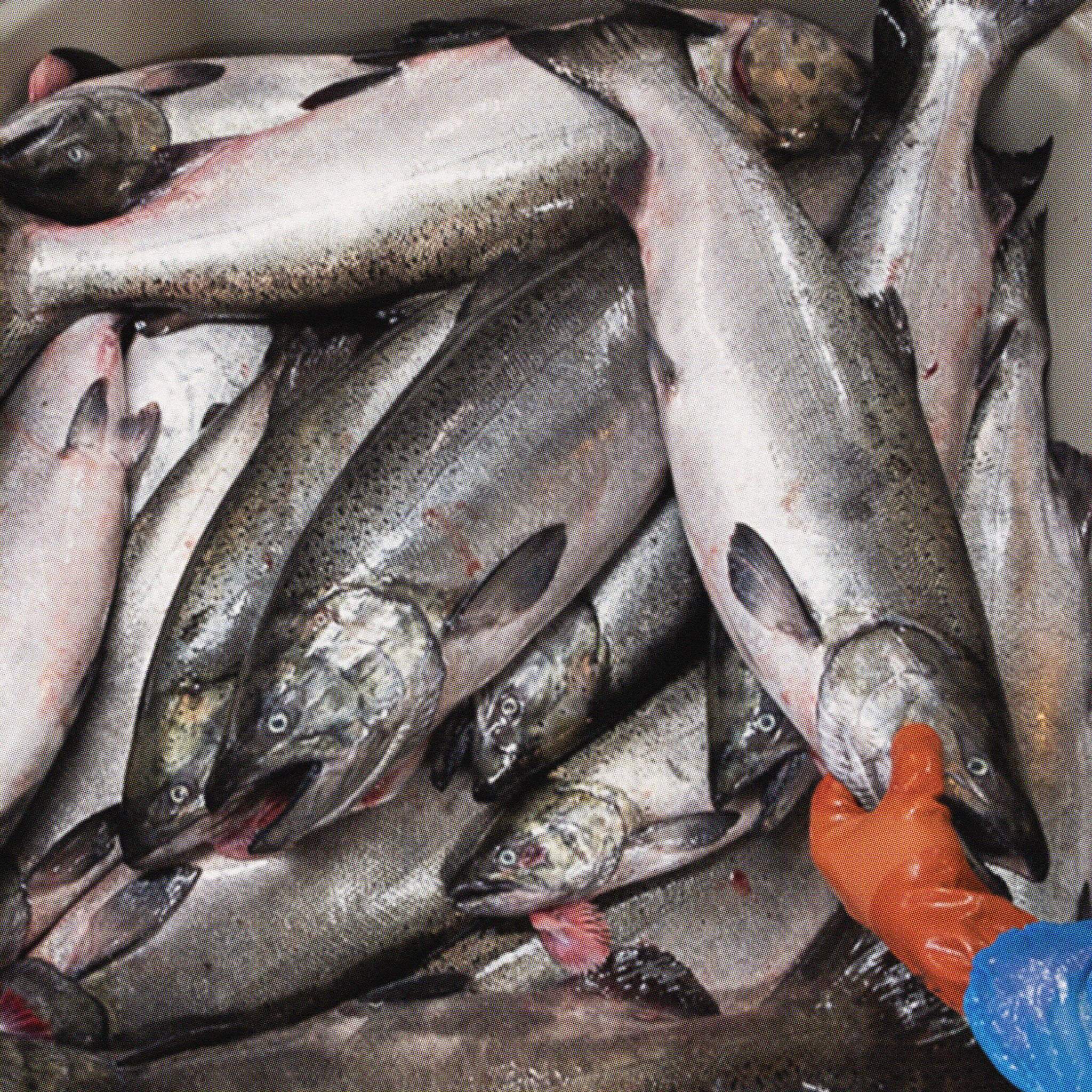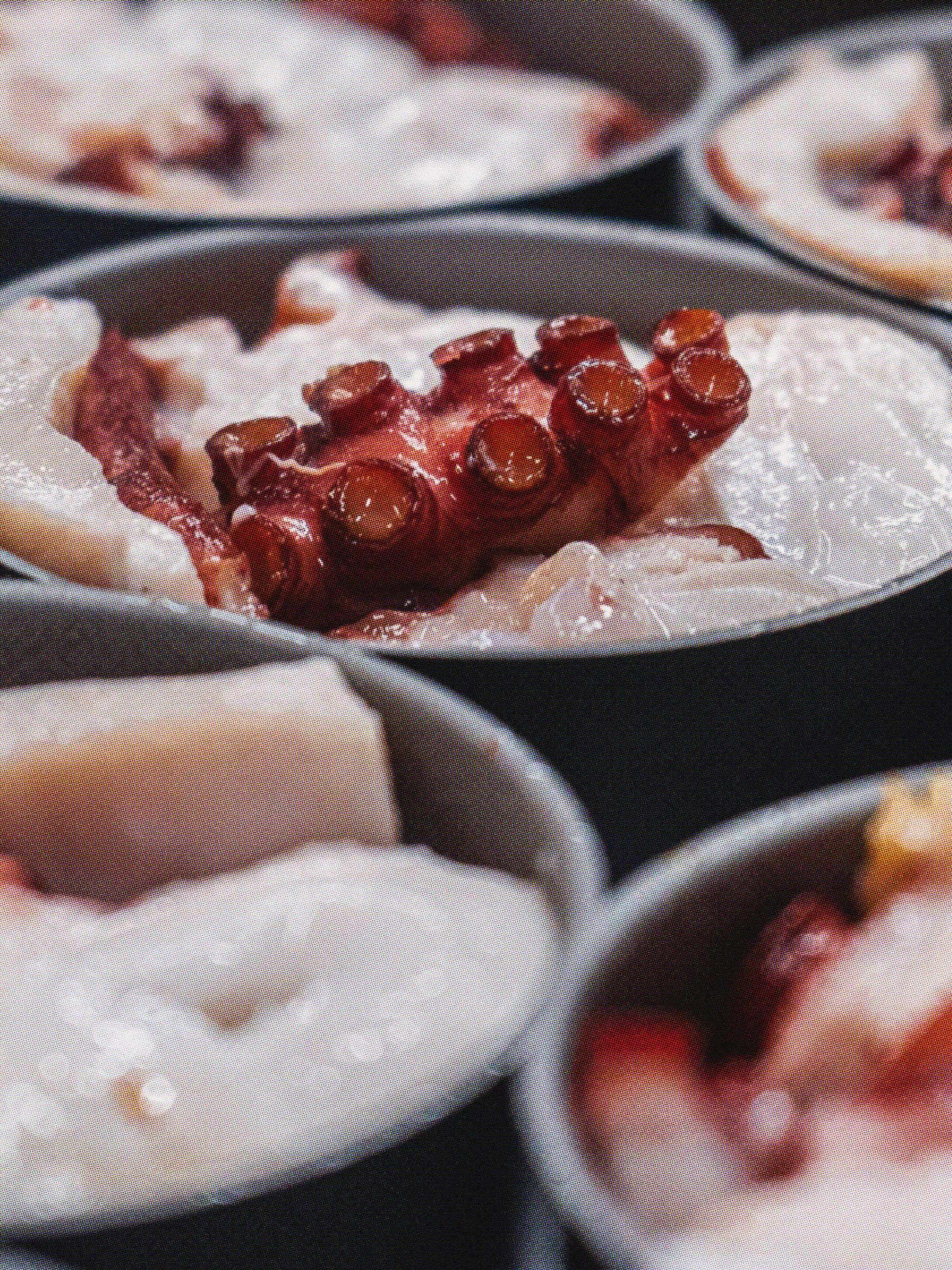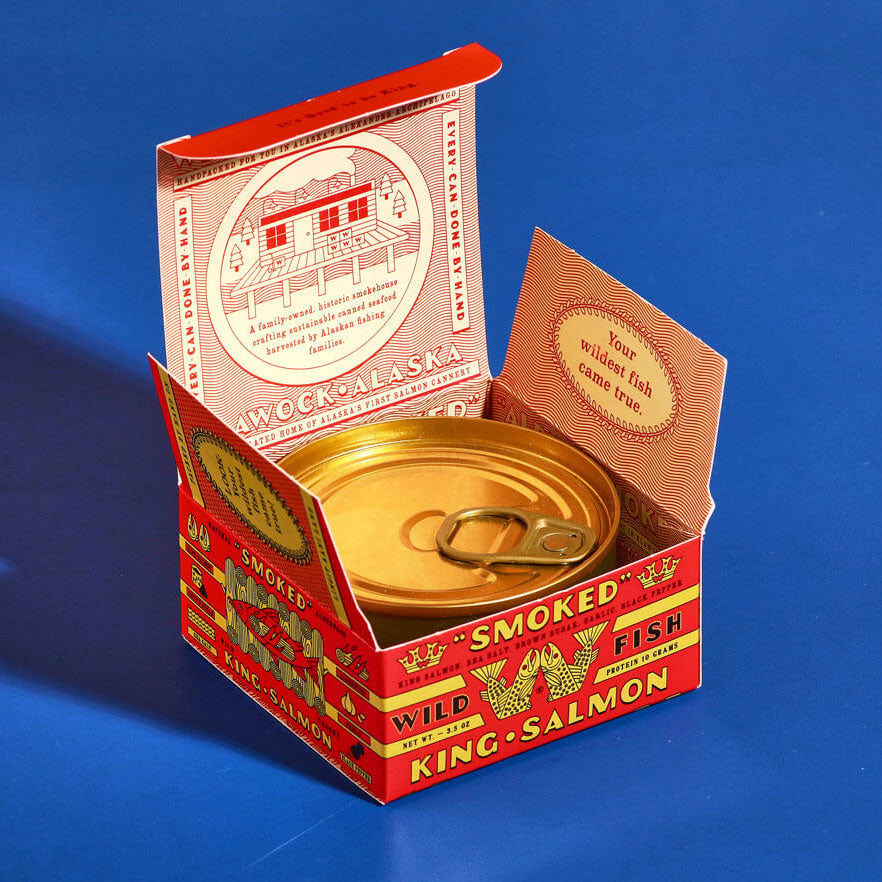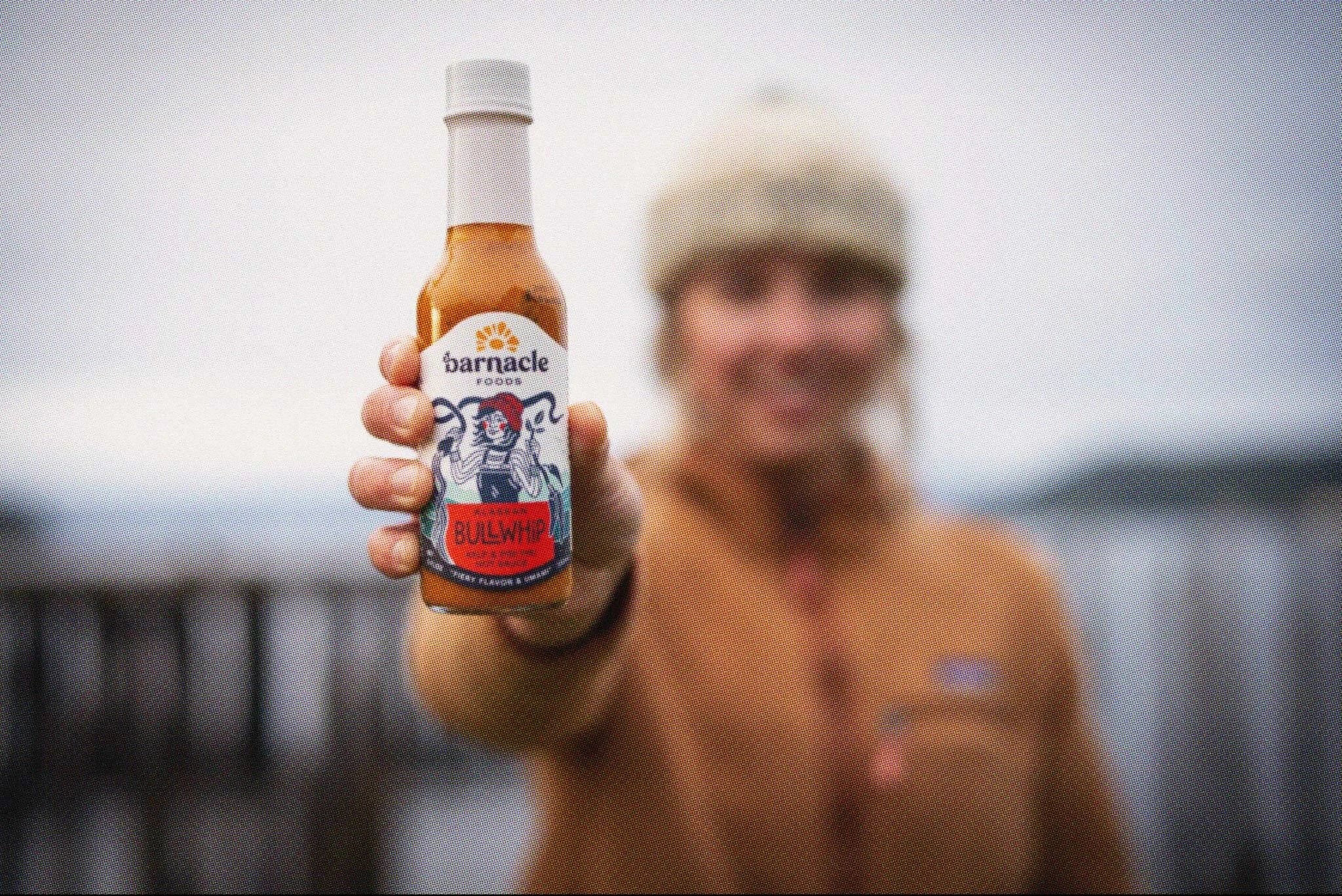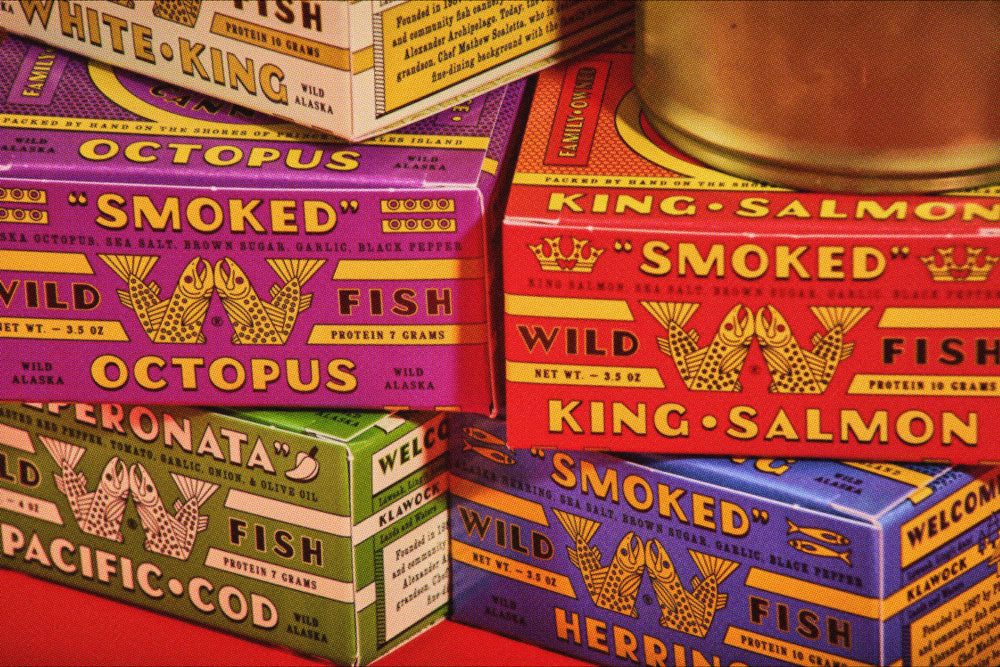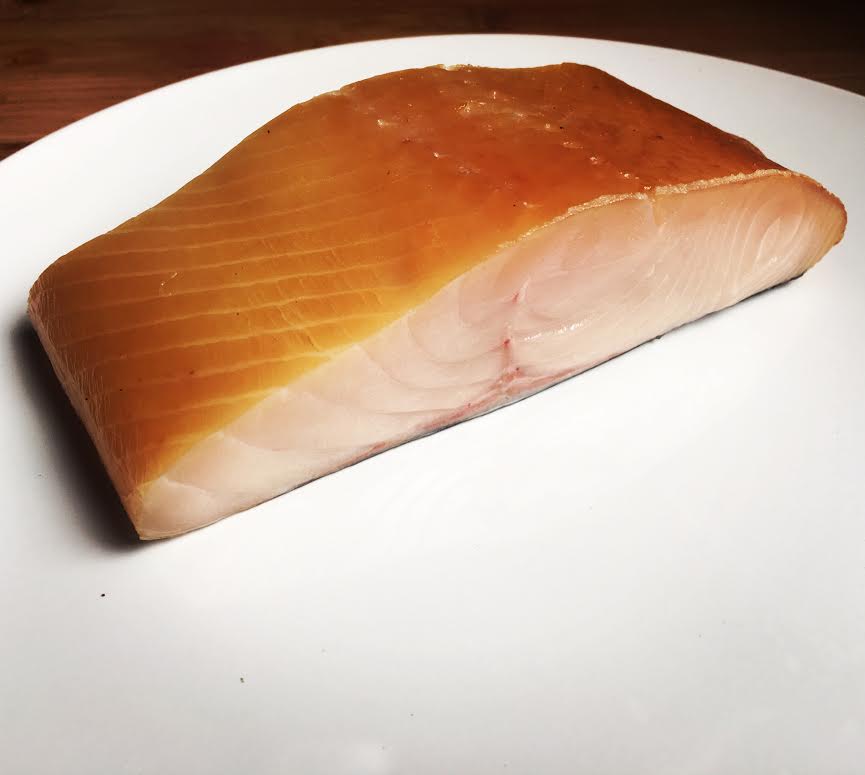

· By Mathew Scaletta
All Hail The Ivory King
A lightly smoked filet of wild Alaskan White King salmon, waiting to be devoured.
We work with quite a variety of wild Alaska salmon at this time of year, but the king salmon destined for our Smoked King and Smoked White King are typically dense and abundant from mid-June onward. This important species, Oncorhynchus tshawytscha, is also referred to as spring salmon, Quinnat, Tyee, Chavycha, and Chinook, after the Northwestern tribe. Native to the North Pacific Ocean, Kings are large in size and their flesh is exceptionally oily, rich in beneficial omega-3 fatty acids. For that reason they are an important source of nutrition to both humans and wildlife, and their sheer abundance during the early summer months makes for a lot of hard work and good eating in Alaska.
The red meat of wild king salmon is a marvelous sight to behold when the fish is first cut open. The vivid color comes from pigment in the tiny crustaceans that comprise their diet. Some kings, however, lack the ability to process these pigment, and so their flesh has more of an ivory hue. Known as white kings, these metabolically challenged salmon make up about 5% of the king population.

There’s no way to tell if you’ve got a white king or not until you cut the fish open. Though they’re now considered special and more desirable by many Alaskans, white kings are identical in every other way to their red-fleshed relatives. The meat’s nutritional value, moisture and fat content are no different than that of any other king. And while the pale meat was less commercially viable many years ago, its uniqueness can now command a considerably higher price from novelty-seeking seafood aficionados.
White kings' inability to process crustacean pigment is the result of genetics, and nothing else. Here on the island, in the Southeast of Alaska, the gene pool of these wan wonders is concentrated a bit more highly in some of the rivers, leading to white king incidences of 15-30% of the entire king population. So if you really want to catch a white king, your best bet is to come and fish in our neck of the woods around this time of year.
Bearing all of this in mind, the current seasonal abundance of common kings means an abundance of white kings too. We’ve processed our share of them, and we’ve got them in cans, ready to ship.
Share:
1 comment
-
Good article Matt. Great info thats simple to read and understand.
Jason askins on
